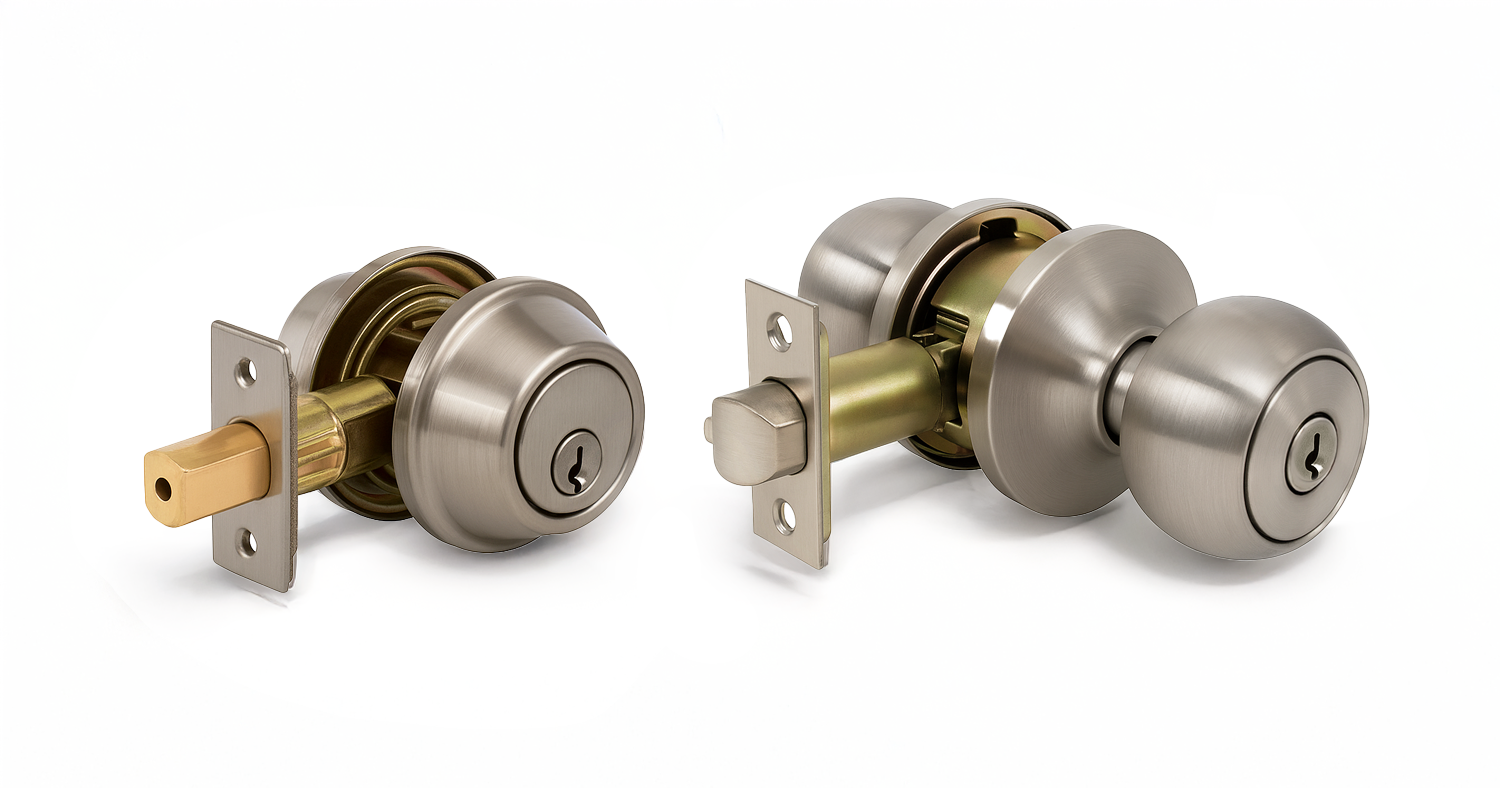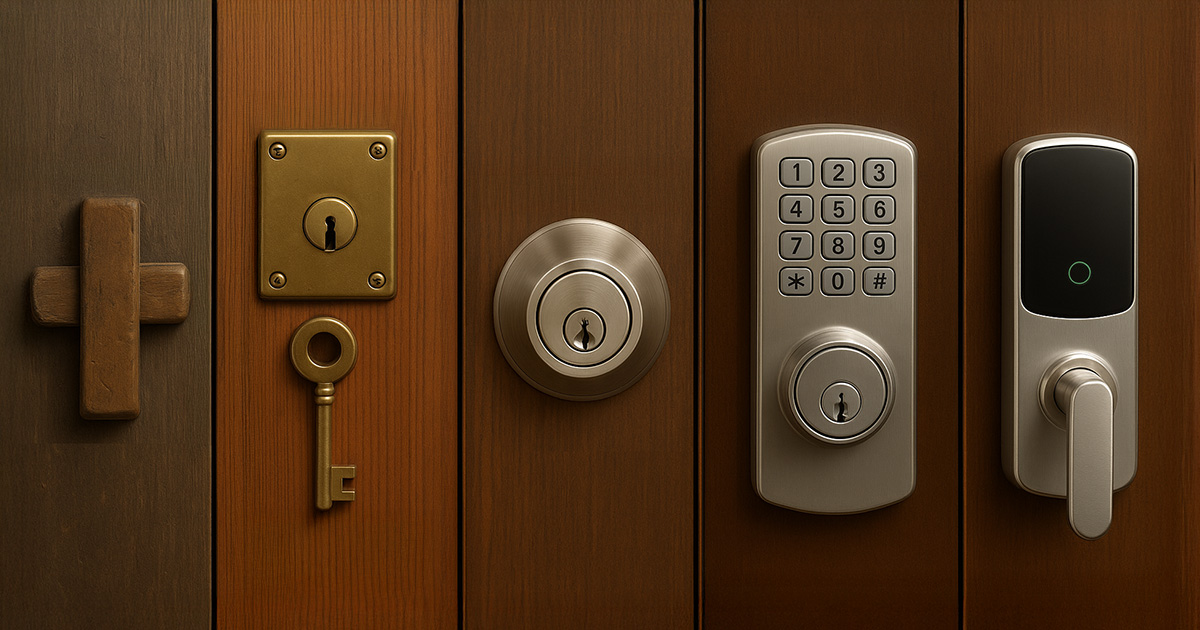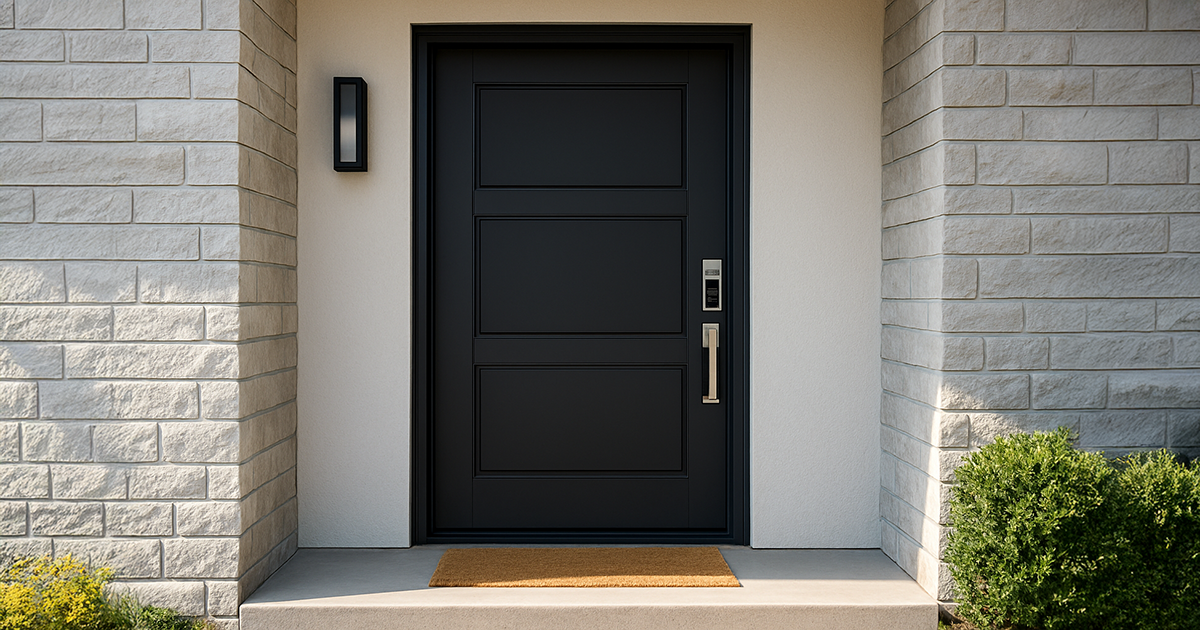Insights > Article > Posted: 2025-Sep-19, Updated: 2025-Oct-07
Deadbolt Locks: Essential Security for Every Entrance
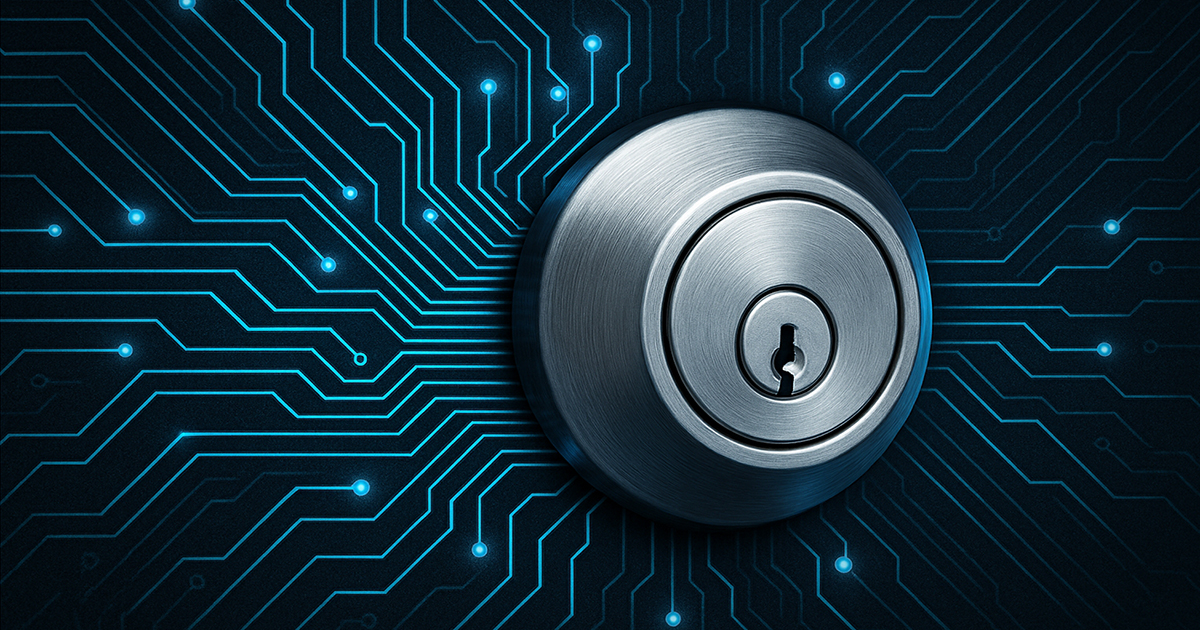
In this article:
- Traditional deadbolts
- Mechanical deadbolts
- Re-keying smart keys
- Technology-enhanced deadbolts
- Smart lock options
- Electronic touchscreen smart Locks (Wi-Fi)
- Electronic fingerprint smart locks
- Electronic keypad smart locks (Bluetooth)
- Security system-enabled deadbolts (Z-Wave/Zigbee)
- Electric keypad deadbolts (Non-Wi-Fi/Bluetooth)
- Multi-connectivity deadbolts
- Multi-lock compatibility
- Retrofit Smart Lock Adapters
- Smart Lock Technology - Cautions
- Choosing the right deadbolt
- Summary
- Related articles
- Installation - Entrance doors
- Request free quote
Traditional deadbolts
Mechanical deadbolts
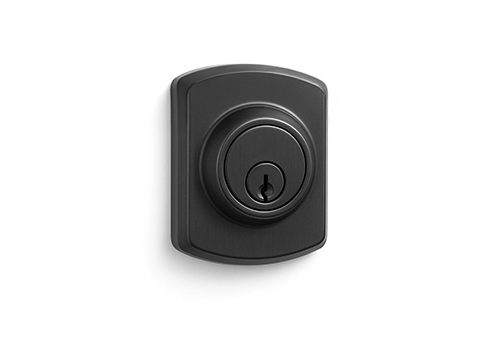
Mechanical deadbolts are the classic choice for home security. They unlock with a key on the exterior and a thumb turn on the interior. Some models include a re-keying option, allowing you to change the key without replacing the lock entirely. Others do not offer re-keying but often come with a lifetime mechanical and finish warranty.
Deadbolts are usually available in single-cylinder (key outside, thumb turn inside) or double-cylinder (key on both sides) configurations. Choosing the right one depends on your home’s layout and your personal security needs.
| Deadbolt Type | Connectivity | Access Options | Backup |
|---|---|---|---|
| Mechanical Deadbolt | None | Key outside, thumb turn inside | Traditional key |
Pros: Reliable, simple to use, long-lasting, and some models are re-keyable.
Cons: No remote control, limited monitoring capabilities.
Re-keying smart keys
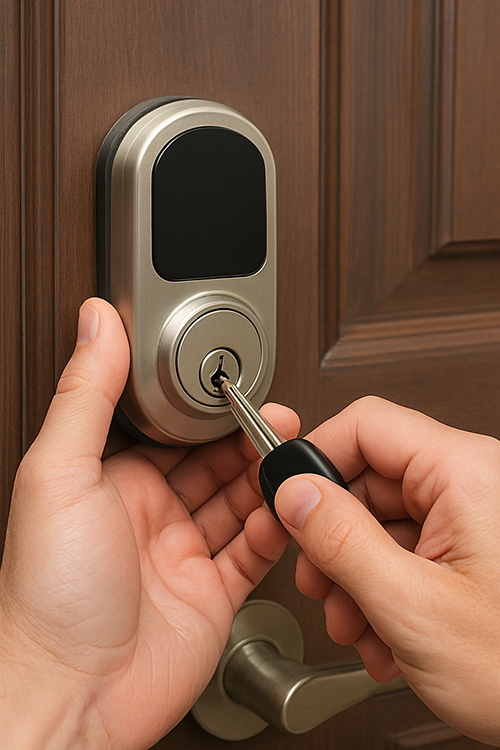
In the past, changing a lock meant calling a locksmith or replacing it yourself. Modern smart key systems simplify this process, allowing doors to be re-keyed in seconds using a compatible smart key. This is a practical option for families, renters, or anyone who frequently updates access permissions.
| Deadbolt Type | Connectivity | Access Options | Backup |
|---|---|---|---|
| Re-Keyable Smart Key | None | Key outside, thumb turn inside | Traditional key |
Pros: Can re-key in seconds without calling a locksmith, easy access management.
Cons: Limited to compatible smart key systems, no remote features.
Technology-enhanced deadbolts
Over the past 20 years, advancements in deadbolt technology have transformed home security. Wi-Fi and Bluetooth-enabled deadbolts allow homeowners to monitor door activity, lock or unlock doors remotely, and receive instant notifications via smartphone apps. Even without Wi-Fi, Bluetooth smart locks provide convenient keyless entry.
Some models still include conventional re-keying options. Others provide audible beeps for door status - open or closed - and low battery alerts. Some manufacturers even offer locks that inhibit the transfer of bacteria, adding a layer of hygiene to your entryway.
Deadbolts are sold individually or as part of handle sets, which include an exterior handle and an interior lever or knob.
Smart lock options
1. Electronic touchscreen smart Locks (Wi-Fi)
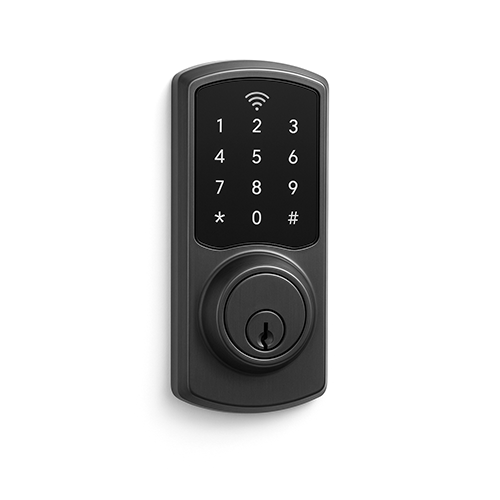
These locks use a numeric touchscreen keypad connected to your home Wi-Fi and managed via an app. Unique access codes can be assigned to family and guests, while traditional key access is maintained for peace of mind. Batteries are required.
| Deadbolt Type | Connectivity | Access Options | Backup |
|---|---|---|---|
| Touchscreen Smart Lock | Wi-Fi | Numeric code, smartphone app, traditional key | Traditional key |
Pros: Remote access via smartphone app, assign multiple access codes, and monitor door activity.
Cons: Batteries required, requires Wi-Fi connectivity, may be more expensive.
2. Electronic fingerprint smart locks (Wi-Fi)
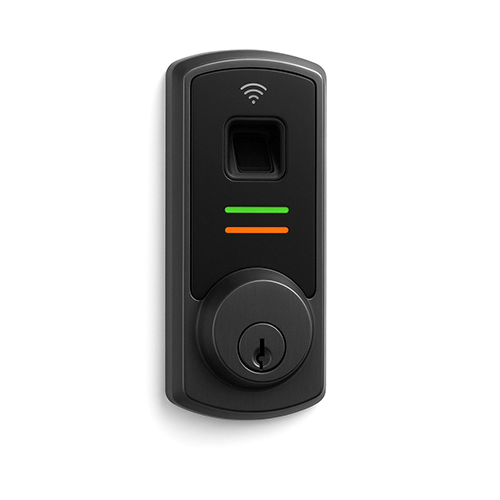
Fingerprint locks allow you to lock or unlock your door with a simple touch. Typically configured as single-cylinder, they connect to Wi-Fi and a smartphone app, storing multiple user fingerprints. Backup keys are included for power outages or technical issues. Coloured LED lights indicate status; usually green for unlocked and orange for locked. Batteries are required.
| Deadbolt Type | Connectivity | Access Options | Backup |
|---|---|---|---|
| Fingerprint Smart Lock | Wi-Fi | Fingerprint, smartphone app, traditional key | Traditional key |
Pros: Quick, keyless access, multiple users, LED lock status, smartphone app management.
Cons: Batteries required, typically single-cylinder, Wi-Fi required for full functionality.
3. Electronic keypad smart locks (Bluetooth)
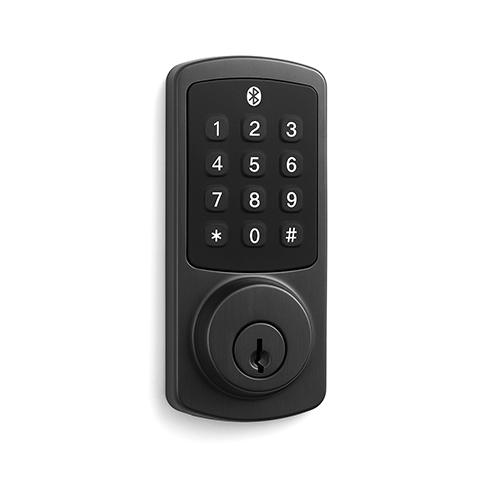
Where Wi-Fi is unavailable, Bluetooth-enabled deadbolts allow keyless entry within Bluetooth range. Users can manage access permissions through a smartphone app while retaining traditional key functionality. Batteries are required.
| Deadbolt Type | Connectivity | Access Options | Backup |
|---|---|---|---|
| Keypad Smart Lock | Bluetooth | Numeric code, smartphone app, traditional key | Traditional key |
Pros: Keyless entry without Wi-Fi, manage users via smartphone within Bluetooth range.
Cons: Limited range due to Bluetooth, batteries required.
4. Security system-enabled deadbolts (Z-Wave/Zigbee)
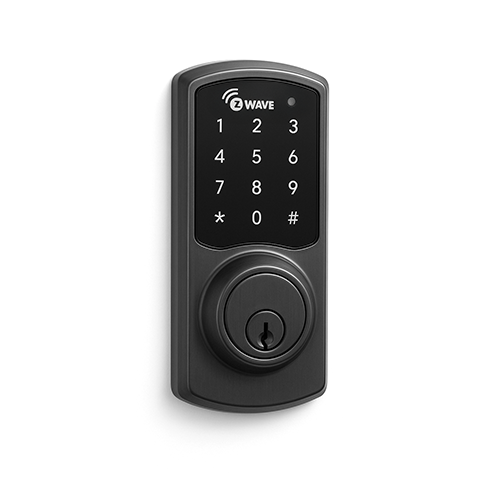
If your home has a compatible security system, some deadbolts integrate with Z-Wave or Zigbee networks, allowing centralised control through your security hub. Always confirm compatibility with your provider before purchase. Batteries are required.
| Deadbolt Type | Connectivity | Access Options | Backup |
|---|---|---|---|
| Security System-Enabled Lock | Z-Wave / Zigbee | App via hub, key access | Traditional key |
Pros: Integrates with smart home security systems, centralised control and remote management.
Cons: Must be compatible with the existing system, batteries required, setup may be more complex.
5. Electric keypad deadbolts (Non-Wi-Fi/Bluetooth)
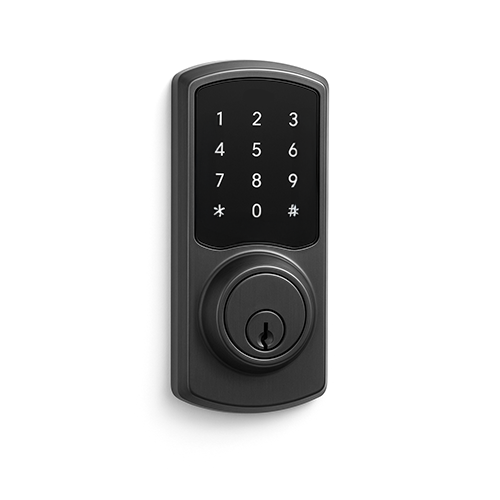
These locks are programmed directly at the lock and offer limited user access. Remote operation is not possible, and they do not communicate with smartphones. Many models provide traditional key access and low or backup battery options. Batteries are required.
| Deadbolt Type | Connectivity | Access Options | Backup |
|---|---|---|---|
| Electric Keypad Deadbolt | None | Numeric code, key access | Traditional key, backup battery options |
Pros: Simple programming, low cost, provides basic keyless entry for a few users.
Cons: No remote access, cannot track activity via smartphone, and limited user access.
6. Multi-connectivity deadbolts
Modern deadbolts increasingly support dual or multi-connectivity options. So in addition to traditional keyed entry, you’ll find models combining keypad or touchscreen access, Bluetooth or WiFi control via smartphone apps, fingerprint or biometric readers, and integration with home automation systems.
These hybrid designs give homeowners flexibility, redundancy, and the ability to tailor security to their lifestyle without relying on a single access method.
7. Retrofit Smart Lock Adapters (Hybrid)
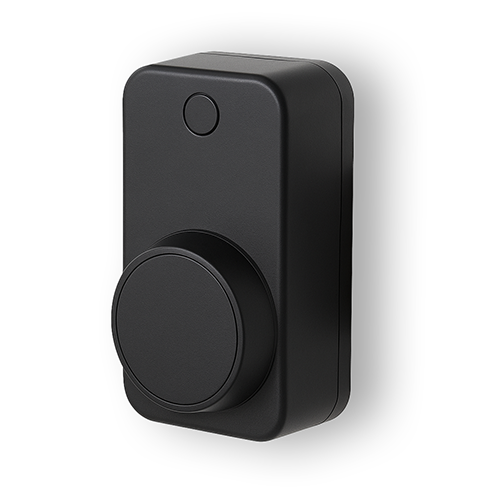
These smart lock adapters attach to the interior side of your existing deadbolt, converting it into a smart lock without changing the exterior hardware. They allow app control, remote access, and the use of unique digital codes for family and guests, while preserving your original key and high-security cylinder. Batteries power the device.
| Deadbolt Type | Connectivity | Access Options | Backup |
|---|---|---|---|
| Retrofit Smart Lock Adapter | Bluetooth / Wi-Fi (depends on model) | Smartphone app, digital codes, existing key | Traditional key |
Pros: Converts your existing lock to smart, preserves exterior hardware and keys, app control, assignable codes, compatible with many high-security locks.
Cons: Batteries required, some models require Wi-Fi hub for remote access, may have limited compatibility with certain deadbolts.
Smart lock technology - Cautions
Many users of smart locks report frustration with reliability and maintenance issues, despite the convenience these devices promise. It is still an evolving technology.
Common complaints include frequent battery replacements, inconsistent connectivity to Wi-Fi or Bluetooth, and occasional software glitches that prevent the lock from functioning properly.
Mobile apps, which are intended to simplify control, sometimes fail to register commands or send delayed notifications, leading to security concerns and user frustration. Additionally, installation challenges and compatibility with existing door hardware can create further complications. Overall, while smart locks offer advanced features like remote access and keyless entry, many consumers find that their performance can fall short of expectations, especially in terms of consistent reliability.
Multi-lock compatability
Question: How can I set up my smart locks so that my front, back, and garage doors all use the same key without needing a locksmith?
Answer: When upgrading your exterior doors with smart locks, you can have your front, back, and garage doors all keyed alike so that one physical key opens every lock. Brands that allow this without a locksmith include Weiser SmartCode and Kwikset Halo, both of which feature SmartKey technology that lets you quickly rekey the locks yourself in just a few minutes.
For this convenience to work, all the locks you want on the same key need to be the same brand and use the same SmartKey-style cylinder, because cylinders from different brands are not cross-compatible. This setup gives you the ease of a single key while still enjoying the security and smart features of modern locks across all your entry points.
Note: Smart lock technology is constantly evolving, and features can vary by model and brand. Be sure to consult one of our door specialists to help you choose the best solution for your home and ensure all your locks are compatible and keyed alike.
Choosing the right deadbolt
When selecting a deadbolt, consider:
Technology vs. simplicity
Decide whether you prefer the familiarity of a traditional keyed lock or the convenience of a smart deadbolt. Smart locks can offer features like app control, voice assistant compatibility, and remote management, while traditional locks may appeal to those who want a straightforward, mechanical solution with fewer points of failure.
Number of users
Consider how many people will need access. Fingerprint and keypad deadbolts are ideal for households or offices with multiple users, eliminating the need to share or duplicate physical keys.
Connectivity
How will you connect? Smart deadbolts vary in how they connect. Some rely on Wi-Fi for full remote access, while others use Bluetooth for close-range control. Higher-end models can also integrate with home security systems, offering automation and monitoring features.
Hygiene
For families or workplaces, touchless or antimicrobial-coated models may help reduce bacterial transfer. Keypads with fingerprint resistance or voice/unlock features can also limit contact.
Backup options
Even advanced locks need a fail-safe. Make sure your deadbolt includes a traditional keyway or an emergency power option so you’re not locked out during a power outage or when the battery runs low.
Warranty
A strong warranty is a good indicator of quality. Look for locks that provide long-term coverage for both mechanical performance and finish durability, ensuring the lock can withstand daily use and environmental wear.
Related articles
Secure your home with the right deadbolt
Whether you prefer the simplicity of a traditional mechanical deadbolt or the convenience of a Wi‑Fi-enabled smart lock, Bayview Windows can help you find the perfect solution for your home. When you purchase a door with professional installation, our team will guide you in selecting locks and hardware that fit your security needs and lifestyle, providing both peace of mind and reliable protection.
Considerations
Window into a Door
